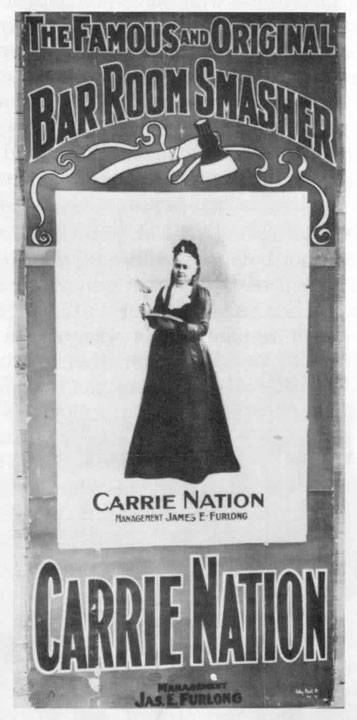
72 years ago today (3/22/1933) Franklin Roosevelt signed legislation allowing the sale of beer of up to 3.2% alcohol by weight, effectively ending prohibition and spelling the end for the 18th Amendment. On 12/5/1933 the 21st Amendment was ratified which struck the failed 18th Amendment down. I encourage you all to take a moment tonight to reflect on how far we've come in the past 72 years, and I'll also personally be thinking of how much better we are without the Volstead act - regardless of whether the Supreme Court decides to back interstate shipping or not.
Prohibition was not just an overnight sensation. Actually it had its roots in the late 1880's and sped toward the creation of the 18th amendment in January 1920, spurred along by all sorts of unrelated occurrences - including the lawless oil towns on the Midwest plains in the 1900's. Those towns were created by the oil fields which drew the men who worked them, and became a boomtown for prostitution, and cheap saloons to supply drink...violence inevitably followed.
They were an obvious and easy target for the likes of self-appointed moral crusaders like Carrie Nation, who could walk into the saloons and smash them to bits with an ax - and walk away Scot free. And while there was a real need for law & order in those towns - as well as something that even remotely resembled moderation - the religious right took it upon themselves to whip it into a tempest (in the media of the day) that they could then defeat like St. George striking down the Dragon...[link]
Carrie Nation was the spokeswoman at the front of the fight. In fact she was in such demand as both a speaker and firebrand that she needed a manager! It was a time that the Anti-Saloon League, Women's Christian Temperance Union, and other organizations (mostly based on religious beliefs) had the US politicians in their palms...

Even so, we have weathered the prohibition experiment. After we experienced all the evils brought on by prohibition that it had been touted to solve, America was finally fed up, and FDR's election as President was due in part to his stand on getting rid of prohibition.We're light years ahead of Carrie Nation...all we need to do is make sure it doesn't happen again! Though there has been a slow quiet steady fight to bring prohibition back ever since it was repealed.
(Even Madd has gone totally over to the DRYS) [link]
Mothers Against Drunk Driving (MADD) is increasingly finding itself "fighting off critics who say the once all-powerful group has become an organization of prohibitionists."
The founder of MADD, Candy Lightner, left the organization years ago because she believed it was moving in the wrong direction.
"It has become far more neo-prohibitionist than I ever wanted or envisioned," said MADD's founder. "I didn't start MADD to deal with alcohol. I started MADD to deal with the issue of drunk driving."
MADD has been calling for bans on alcohol advertising, widespread sobriety checkpoints, increased taxes on alcohol beverages, and other measures that have drawn sharp criticism not only from the organization's founder but also from consumer-rights advocates and civil liberties supporters, among others.
Reference: Bresnahan, S. MADD Struggles to Remain Relevant. Washington Times, August 6, 2002, B1-2.)
Frankly, the last thing I ever need to see is this ~

Really, she looks like Queen Victoria channeling Lizzie Borden...
...and a message for those who want to bring prohibition back...











